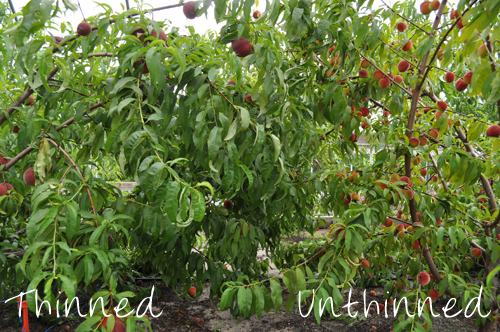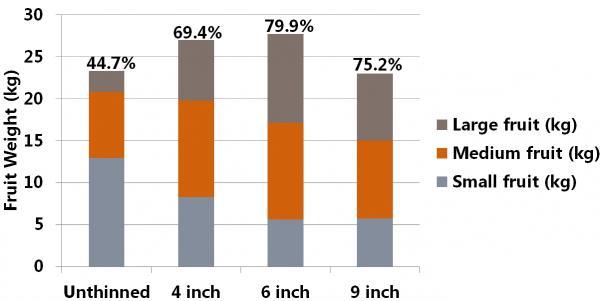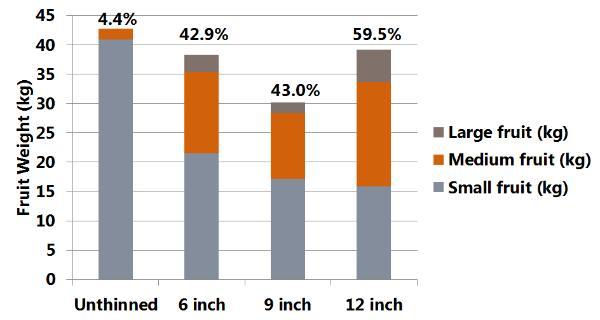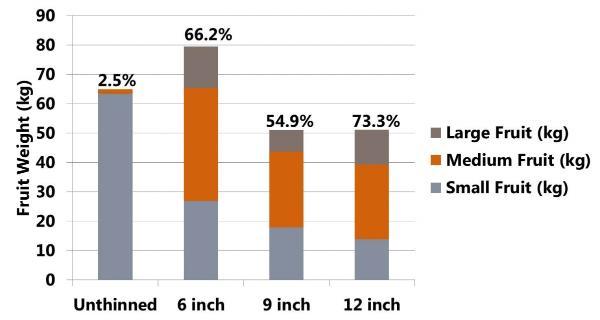Thinning and Cropload Management
Thinning stone fruit is one of the most important tools in your toolbox to ensure the production of large, high-quality fruit. Peach trees tend to set fruit throughout the bloom period and fruit of varying ages often exist on a branch or scaffold. Weather conditions during the bloom period may naturally "thin" some of the fruit, especially if frost events occur during this period. Ideal weather conditions may allow for excessive fruit set which can be detrimental to fruit size, quality and tree longevity (Figure 1).

Timing
 To achieve maximum marketable fruit size and optimum quality, peaches should be thinned before the pit hardening stage. If the fruit can be cut completely through the pit area, then pit hardening has not occurred. At this stage, the peach size is on the order of a dime or nickel and the fruit can be twisted off the stem and dropped to the orchard floor.
To achieve maximum marketable fruit size and optimum quality, peaches should be thinned before the pit hardening stage. If the fruit can be cut completely through the pit area, then pit hardening has not occurred. At this stage, the peach size is on the order of a dime or nickel and the fruit can be twisted off the stem and dropped to the orchard floor.
Spacing
According to the Florida Subtropical Peach Production Practices guide, peaches and nectarines should be thinned to one every six (6") to ten inches (10"). A small demonstration at the Citra Farm Site is exploring the range of thinning spacing (Unthinned, 4", 6", and 9") to investigate the potential yield benefits of these spacings (Figure 2). A similar experiment at Water Conserv II and the Mid-Florida Citrus Foundation is looking at 1, 2, or 3 fruit per lateral and effects on fruit size and marketable yield (Figures 3-5).




Results
In order to have marketable fruit diameter, the fruit must be at least 2¼ inches in diameter; although there is increasing pressure from grocery store produce buyers for this minimum to be 2½ inches. However, low-chill stone fruit has a short fruit developmental period, and this, coupled with its early ripening window tends to produce smaller fruit. New stone fruit varieties are being selected with one emphasis being large fruit size to account for this short fruit developmental period. Growers receive a premium for large diameter fruit early in the season (i. e., >2½ inch), thus proper thinning is essential for optimum yield and profit.
Although there isn't one consistent spacing that works for all varieties, there is a general trend towards greater percentages of large fruit as the spacing between fruit increase.
